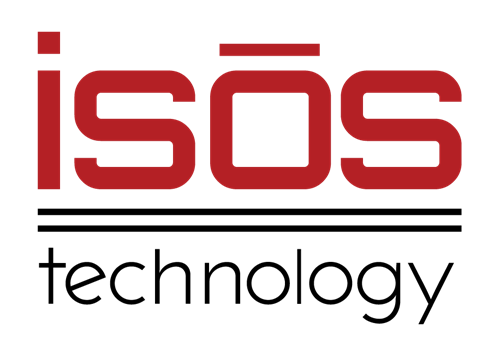 Key Takeaways
Key Takeaways
- Lift and shift migration offers a streamlined path to cloud for organizations seeking to maintain existing workflows while gaining cloud benefits.
- Data volume, organizational readiness, application dependencies, infrastructure requirements, and cost objectives all influence migration strategy selection.
- Alternative approaches like "Start Fresh," "Optimize and Shift," and phased migration provide options for organizations with specific needs.
- Successful implementation requires thorough assessment, data preparation, comprehensive testing, and post-migration optimization.
- Organizations should evaluate their specific context and objectives when determining whether lift and shift is the appropriate migration approach.
Understanding Lift and Shift Migration: A Practical Approach for Atlassian Environments
The journey to the cloud doesn't have to be complicated. For many organizations using Atlassian tools, a lift and shift migration approach offers a straightforward path to modernization while minimizing disruption. This strategy involves moving applications and data from on-premises environments to the cloud with minimal modifications, preserving existing configurations and workflows.
When evaluating migration strategies for your Atlassian ecosystem, understanding when lift and shift makes sense can save your team significant time, resources, and potential headaches. Let's explore the lift and shift methodology in the context of Atlassian tools, examining when this approach delivers optimal results and when alternative strategies might better serve your organization's needs.
When Lift and Shift Makes Sense for Atlassian Tools Migration
Migrating Atlassian tools from on-premises environments to the cloud represents a significant transition for many organizations. The lift and shift migration approach offers a pragmatic solution that minimizes disruption while enabling access to cloud benefits. This strategy involves moving your existing Atlassian configuration, data, and workflows to the cloud with minimal modifications.
According to Atlassian's migration documentation, a lift and shift migration "focuses on migrating your instance in a single downtime window" with proper planning and data preparation done ahead of time. This approach is particularly suitable for organizations that want to maintain their existing workflows and configurations while gaining the advantages of cloud infrastructure.
When evaluating whether lift and shift is the right migration strategy for your Atlassian tools, several key factors should inform your decision:
Data Volume and Complexity Considerations
The volume and complexity of your Atlassian data significantly impact the feasibility of a lift and shift migration. Organizations with extensive customizations, large data volumes, or complex integrations may face challenges with this approach.
For teams with under 10,000 users, Atlassian typically recommends the lift and shift method. However, the expected migration timeline varies based on user count:
- 0-5,000 users: approximately 4 months
- 5,000-10,000 users: approximately 6 months
- 10,000+ users: 6+ months with specialized assistance recommended
When dealing with large data volumes, thorough data cleanup before migration becomes essential. As Atlassian notes, "The more data you migrate, the longer and more complex your migration is likely to be and could affect Cloud performance later on."
Organizational Readiness and Timeline Constraints
Organizational readiness is crucial in determining whether lift and shift is appropriate for your Atlassian migration. This includes assessing your team's capacity to manage the migration process and the urgency of your timeline.
For organizations facing server end-of-support deadlines or seeking to quickly leverage cloud benefits, lift and shift offers an expedient path forward. Atlassian states, "For most clients, we recommend a lift and shift method as it often helps reduce migration complications and timelines, enabling your organization to take advantage of the benefits of Cloud faster."
However, this approach requires dedicated resources and careful planning. Organizations should consider forming a "champion team" to help plan and test the new cloud instance, typically including IT department representatives or stakeholders from various departments.
Application and Integration Dependencies
Your existing application ecosystem and integration dependencies heavily influence the suitability of a lift-and-shift approach. This includes evaluating Marketplace apps, custom integrations, and workflow dependencies.
Before proceeding with a lift and shift migration, organizations should conduct a thorough assessment of their Marketplace apps and integrations. Atlassian recommends "taking stock of the current Marketplace apps (also referred to as plugins) that you've installed or built on your own" and utilizing their app assessment support hub to determine cloud compatibility.
It's important to note that not all server apps have cloud equivalents, and some functionality may be built directly into cloud versions of Atlassian products. This assessment helps identify potential gaps or modifications needed during migration.
Infrastructure and Security Requirements
Your organization's infrastructure requirements and security considerations significantly impact the viability of a lift and shift approach. This includes evaluating authentication methods, compliance requirements, and data residency needs.
For organizations using self-managed LDAP or Active Directory for authentication, Atlassian recommends using Atlassian Guard Standard as a bridge between your identity provider and Atlassian Cloud apps. Additionally, organizations should "create an organization and verify their domain(s) for centralized management of all users across multiple Cloud sites."
Implementing cloud security best practices after migration is essential. According to Atlassian, "Cloud governance also looks a little different than your typical self-managed security setup," requiring familiarity with identity providers, security protocols, and Atlassian's role in data security.
Cost and Resource Optimization Objectives
Financial considerations and resource optimization goals significantly determine whether lift and shift is appropriate for your Atlassian migration. This includes evaluating the cost implications of different migration approaches and the potential for resource optimization.
According to SPK and Associates, organizations that migrated to Atlassian Cloud realized significant benefits, including "cost savings by eliminating the need for on-prem infrastructure maintenance, reducing IT overhead and administrative costs, and offering scalable pricing to fit business needs."
However, a pure lift-and-shift approach may not fully capitalize on these benefits. As noted by SPK, "Organizations often migrate from Atlassian Data Center to Cloud solely based on technical needs... This mindset that a migration should take all of the same data and move it over limits the full potential of cloud adoption."
Alternatives to Lift and Shift for Atlassian Migrations
While lift and shift offers a straightforward migration path, alternative approaches may better serve organizations with specific needs or objectives. Understanding these alternatives helps inform your migration strategy decision.
Start Fresh Approach
For organizations seeking a clean slate or those with minimal dependency on historical data, the "Start Fresh" approach offers an alternative to lift and shift. This involves setting up a new cloud environment without migrating existing data.
According to Atlassian, this approach may be suitable "if you're confident you won't be working with the majority of your existing server project data going forward" or "if you want to start working in cloud immediately and revisit the migration of your server data at a later date."
This approach allows organizations to reassess how teams work, configure new sites optimally, and develop comprehensive rollout plans. It doesn't mean abandoning historical data entirely—organizations can maintain read-only access to server instances while moving forward with cloud-native operations.
Optimize and Shift Strategy
For organizations seeking to balance continuity with improvement, the "Optimize and Shift" approach offers a middle ground between lift and shift and starting fresh. This involves selectively migrating data while improving processes and configurations.
Atlassian describes this as "the strategy most teams use because it allows them to jettison whatever isn't working and improve upon what is." This approach enables organizations to "assess which data to migrate to cloud and which to leave behind on your server instance for future reference in a read-only state."
This strategy is particularly beneficial for organizations undergoing parallel transformations, such as adopting DevOps practices. As Atlassian notes, "Training people on a new work practice in a fresh site is often more successful than trying to apply new processes to existing projects."
Phased Migration Approach
For organizations with complex environments or those seeking to minimize risk, a phased migration approach offers an alternative to a comprehensive lift and shift. This involves migrating specific projects, teams, or instances sequentially rather than simultaneously.
According to SPK and Associates, "a phased rollout migrates a few departments at a time. This is the most common type of migration as organizations can learn from the successes and issues of the first few departments to make the next few smoother."
This approach requires careful planning regarding which departments to migrate first, particularly considering interdependencies. As SPK notes, "If a few departments frequently work together, it may be best to roll them out at the same time so they are all using the same set of tools."
Replatforming and Refactoring
For organizations seeking to fundamentally redesign their Atlassian implementation, re-platforming or refactoring offers a more transformative alternative to lift and shift. This involves significantly redesigning workflows, configurations, and integrations during migration.
While more resource-intensive than lift and shift, this approach enables organizations to fully leverage cloud-native capabilities and address fundamental issues with existing implementations. It suits organizations with heavily customized environments that may not translate directly to cloud equivalents.
This approach aligns with SPK's recommendation that "businesses should see migration as an opportunity to optimize workflows, retool processes, and enhance collaboration" rather than simply moving existing configurations to a new environment.
Implementing a Successful Lift and Shift Migration for Atlassian Tools
For organizations that determine lift and shift is the appropriate migration strategy, implementing a structured approach, which includes thorough planning, preparation, testing, and execution, maximizes success probability and minimizes disruption.
Pre-Migration Assessment and Planning
Comprehensive assessment and planning are essential before initiating a lift and shift migration. This includes evaluating your current environment, defining migration objectives, and developing a detailed migration plan.
Atlassian recommends "answering some foundational questions to understand your current Atlassian footprint, your ideal end-state in the cloud, and how you'll get there." This includes mapping your current environment and identifying desired changes or optimizations.
Additionally, organizations should evaluate migration tooling and team requirements, assess Marketplace apps and integrations, and determine identity and user management approaches. This comprehensive assessment forms the foundation for a successful migration plan.
Data Cleanup and Preparation
Effective data cleanup and preparation significantly impact migration success, particularly for lift and shift approaches. This includes identifying unnecessary data, resolving inconsistencies, and optimizing configurations.
Atlassian emphasizes that "cleaning up your data before migrating can help reduce migration downtime and make for less work post-migration." Specific areas to address include "inactive Marketplace apps or users, old product data such as projects, spaces, customizations, or workflows, and duplicate data."
This preparation phase also includes ensuring your current environment is up-to-date, as "older versions of our Cloud Migration Assistants are no longer supported." Upgrading to the latest versions ensures "a smoother and more stable migration experience."
Testing and Validation
Comprehensive testing before production migration is critical for lift and shift success. This includes running test migrations, validating data integrity, and conducting user acceptance testing.
Atlassian states that "regardless of company size or migration complexity, all clients should run through a test migration before executing a production migration. Many teams will need multiple test migrations to help identify and fix any issues."
This testing phase should include backing up data, setting up the cloud site, installing Marketplace apps, and conducting user acceptance testing to ensure end users can "replicate common day-to-day tasks, and make sure they work as expected."
Production Migration Execution
With thorough preparation and testing complete, executing the production migration requires careful coordination and communication. This includes scheduling downtime, setting read-only permissions, and running the migration tools.
Atlassian recommends scheduling migration "at night, over a weekend, or another time when your team is less likely to need access to your Data Center instance or Cloud site to reduce the risk of disruption and data discrepancies."
Organizations should set user permissions to read-only during migration to prevent changes and confusion. For Jira, this involves "manually setting to read-only by creating a permission scheme that only allows 'browse' permission and applying it to all projects." For Confluence, it requires "working through each space and removing all permissions for anything other than read."
Post-Migration Optimization
After completing the migration, post-migration tasks ensure optimal functionality and user adoption. This includes fixing links, completing configuration tasks, and implementing cloud-specific optimizations.
Atlassian notes that "after migrating Jira or Confluence (Server or Data Center) to Atlassian Cloud, some URLs in the recently migrated instances might appear broken as they still point at the old Server or Data Center instances." Addressing these link issues is a critical post-migration task.
Additionally, organizations should implement cloud security best practices, follow cloud updates through the Atlassian Cloud roadmap, and continuously optimize their environment to maximize the benefits of cloud migration.
Key Takeaways
- Strategic Assessment: Evaluate your organization's needs, data complexity, and timeline constraints before committing to a lift and shift migration for Atlassian tools.
- Preparation is Critical: Thorough data cleanup, app assessment, and environment preparation significantly impact migration success and efficiency.
- Testing Ensures Success: Comprehensive test migrations and user acceptance testing identify issues before production migration, minimizing disruption.
- Alternative Approaches: When lift and shift don't align with your objectives, consider "Start Fresh," "Optimize and Shift," or phased migration strategies.
- Post-Migration Optimization: Address link issues, implement cloud security best practices, and continuously optimize your environment after migration.\
FAQs About Lift and Shift Migration for Atlassian Tools
What is the average timeline for Atlassian tools' lift and shift migration?
The lift and shift migration timeline varies based on organization size and complexity. According to Atlassian, organizations with 0-5,000 users typically require about 4 months, 5,000-10,000 users need approximately 6 months, and organizations with over 10,000 users should plan for 6+ months with specialized assistance. These timelines include assessment, planning, preparation, testing, migration execution, and post-migration optimization.
How does lift and shift migration differ from replatforming for Atlassian tools?
Lift and shift migration involves moving your existing Atlassian configuration, data, and workflows to the cloud with minimal modifications, preserving your current setup. In contrast, replatforming (sometimes called "Optimize and Shift") involves selectively migrating data while significantly improving processes, configurations, and workflows. Replatforming typically requires more planning and resources but enables greater optimization of your Atlassian environment.
What are the primary challenges of a lift and shift migration for Atlassian tools?
The primary challenges of lift and shift migration include managing large data volumes that increase migration complexity and duration, ensuring Marketplace app compatibility between server and cloud environments, addressing authentication and user management differences, maintaining data integrity during migration, and managing user expectations during the transition. Organizations with heavily customized environments or complex integrations may face additional challenges.
What preparation steps are most critical for a successful lift and shift migration?
The most critical preparation steps include thorough data cleanup to remove inactive users, obsolete projects, and duplicate data; comprehensive Marketplace app assessment to determine cloud compatibility; identity and user management planning, particularly for organizations using LDAP or Active Directory; backing up all data before migration; and conducting multiple test migrations to identify and resolve issues before production migration.
How should organizations handle user management during a lift and shift migration?
Organizations should create an Atlassian organization and verify their domains for centralized user management across cloud sites. Atlassian recommends implementing Atlassian Guard Standard as a bridge between identity providers and cloud applications for those using self-managed LDAP or Active Directory. Additionally, organizations should plan user communication carefully, including providing clear instructions on accessing the new environment, required password resets, and changes to functionality or workflows.
Key Takeaways
- Lift and shift migration offers a streamlined path to cloud for organizations seeking to maintain existing workflows while gaining cloud benefits.
- Data volume, organizational readiness, application dependencies, infrastructure requirements, and cost objectives all influence migration strategy selection.
- Alternative approaches like "Start Fresh," "Optimize and Shift," and phased migration provide options for organizations with specific needs.
- Successful implementation requires thorough assessment, data preparation, comprehensive testing, and post-migration optimization.
- Organizations should evaluate their specific context and objectives when determining whether lift and shift is the appropriate migration approach.
Sources:
Atlassian SupportAtlassian Cloud Migration Guide
SPK and Associates
Work Life by Atlassian
TechTarget
Deviniti
Sign up to receive more great content
Learn more about Atlassian and how Isos can help by signing up to receive our latest blogs, eBooks, whitepapers and more.













